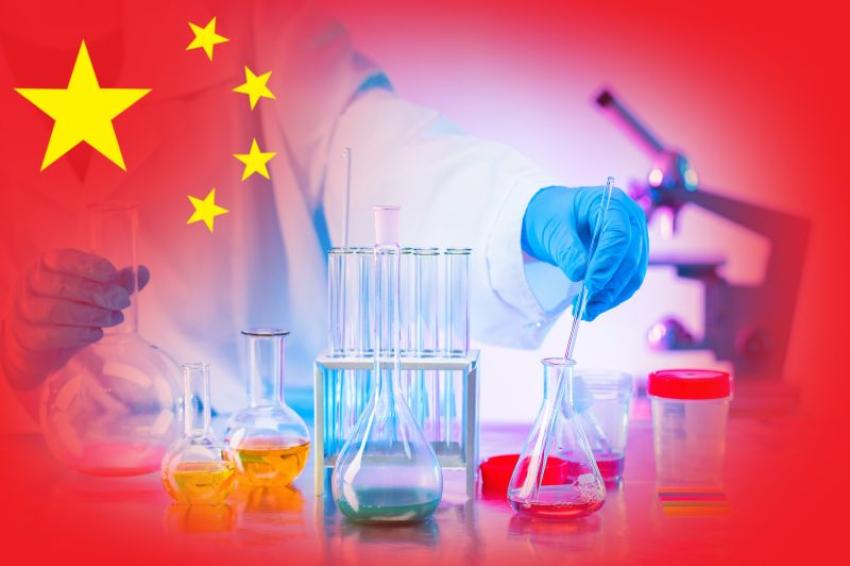Tougher Times for China’s Chemical Industry
2023 was not a great year but long-term prospects in China are still good
In January 2023, industry magazine C&EN wrote “After a bumpy 2022, China’s chemical industry is poised to benefit this year from the country’s recent lifting of its zero-COVID-19 policies”. Unfortunately, as with many forecasts, this turned out to be wrong.
In fact, the profit of large-scale Chinese chemical companies dropped by 47% in the period from January to September 2023 compared to the same period in 2022 – a much larger drop than the 9% decline observed over all industries in China. Admittedly, this is partly the reflection of a global phenomenon, as an analysis by Nikkei Asia showed that of all industries examined, globally the chemical sector had the biggest decline in profits in Q3 2023. However, many of the reasons for the current weakness of China’s chemical industry are specific to the country.
Many basic chemicals and polymers including fertilizers, styrene and PVC suffer from overcapacity and corresponding low operating rates. In 2022, the capacity utilization rate of China's chemical industry was 76.7%, a year-on-year decrease of 1.4 percentage points and a value substantially lower than in the Western chemical industry. For some major chemicals, utilization rates are substantially lower still. For polycarbonate and for PA66, capacity utilization is only around 60%. For PTA, capacity utilization declined from about 83% in 2019 to 75% in 2022 as capacity growth outpaced demand growth. In some cases, overcapacity coexists with high import dependency, for example in polyethylene, as a substantial share of the imported materials are specialty grades not offered by Chinese producers.
More chemicals will be added to this list, as the Chinese chemical industry seems particularly prone to what management consultants politely call “strategic crowding”. For example, forecasts predict that China’s self-sufficiency rates for propylene and PX will reach 116% and 118% by 2025 respectively. And different from the admittedly not infrequent previous occurrences of overcapacity, the much slower growth of the overall economy lowers the chances of them quickly being absorbed by growing demand.
The low capacity utilization of China’s chemical industry becomes particularly apparent when comparing China’s oil processing capacity with that of the US. While the capacity is now larger than that of the US, the volume actually processed in the US (more than 800 million tons) is substantially higher than in China (less than 700 million tons), indicating an approximate capacity utilization of 90% in the US versus 70% in China.
Of course, low capacity utilization primarily hints at weak demand. One factor particularly affects the chemical industry, namely the weakness of the construction sector The demand for many chemical products from architectural coatings and construction chemicals to the plastics used in cables, pipes and electrical appliances directly or indirectly depends on the number of apartments being built. As a consequence, the chemical industry is in a worse situation than to be expected just based on China’s current overall low economic growth.
Several other issues also specifically affect the chemical sector:
- In petrochemicals, China’s cost position is weak compared to that of big non-Chinese competitors as the region has the world’s highest feedstock costs, according to S&P Global
- Government support for many basic chemicals is declining as the goal of self-sufficiency is within reach and regional authorities have alternatives for industry development which are regarded as less risky
- In some segments, the Chinese global market share is already very high, thus severely limiting the potential for further growth. For example, in 2022, China already accounted for 72% of the global market for chemical fibers
- Tightened environmental and safety regulations add costs and restrictions to chemical operations, as do inspections like those announced by the Ministry of Emergency Management in May 2023
Some Chinese chemical companies are already reacting to the tougher business environment. Mainly, they follow two approaches. One that so far is only tentatively utilized is an expansion of their global business, as pioneered and continued by Wanhua with its early acquisition of Borsodchem. Recently, effect pigment producer Global New Materials acquired its Korean competitor CQV and also bid for Merck’s business in pearlescent pigments. Trina Solar plans to build a large-scale photovoltaic plant in the UAE while several Chinese chemical companies including Wanhua and CNOOC reportedly are among the bidders for Shell’s chemical assets in Singapore.
The other approach is to move into specialty and innovative chemical segments in order to allow for growth and higher profitability as well as to escape toughening competition. For example, Wanhua will increase its SAP production and is also moving into a range of new areas such as lithium salts, photovoltaics, nylon 12, and nutrition. Kingfa invests in very high-end polymers such as polyphenylene sulfone/polyether sulfone. And the state-owned oil companies invest in the hydrogen economy, with Sinopec being particularly active in the area. The move into higher-end and more innovative chemicals and materials is also described in a paper by Joseph Zenick and Keith B. Belton of the American Chemistry Council. It indicates that China's portfolio of chemicals exported has become more complex and high-end between 2000 and 2021.
Despite its current weakness, it would be wrong to be very pessimistic about the longer-term prospects of China’s chemical industry. BASF still expects China’s global chemical market share to be above 50% by 2030 and to contribute 75% of chemical production growth while other sources predict a share of 62% by 2035. Recent investments of Western chemical companies indicate that these forecasts are being taken seriously. To give just a few examples from the last few months:
-
AkzoNobel International Paint will add production capacity for 8,000 tons of high-performance wind turbine blade coatings per year in China
-
Arkema started the production of specialty UV/LED curing resins at its expanded facility in Nansha
-
BASF stated that despite cuts in its overall investment budget, core areas including China will likely be unaffected by the cuts
-
Clariant will open a new production facility for halogen-free flame retardants in Daya Bay, Huizhou
-
Croda broke ground for a multi-purpose plant in Guangzhou
-
De Nora opened a new electrode production line for electrodes used in chlor-alkali plants, an area in which China has a global market share of about 45%
-
Evonik started cooperations with Chinese companies in several areas including bio-based coatings (Baolijia), hydrogen peroxide (Fuhua), and farm animal gut health (Shandong Vland Biotech). The company also expanded its precious metal powder catalyst factory
-
IMCD entered the lubricants distribution market with the acquisition of Guangzhou RBD Chemical
-
Radici raised the manufacturing capacity of its techno polymers at its Suzhou plant by 100%
-
Solvay expanded its R&D center in Shanghai
Not least the already established market dominance of China in some segments that are among the most important customers of the chemical industry – such as producers of solar panels, lithium batteries or electric vehicles – suggest that these investments will be successful despite the current weakness of the Chinese chemical industry. In particular, Western chemical companies investing in China primarily rely on selling to the Chinese market (“In China for China”), thus reducing any potential fallout from a further bifurcation of the global chemical market. Most importantly, even a market growth rate of 3-4% - quite anemic for China – still exceeds that of Western markets by a wide margin.
Kai Pflug, Management Consulting – Chemicals, Shanghai









